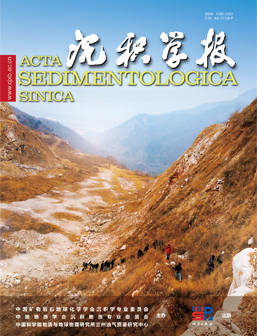Source-to-sink system difference and structure-sedimentary pattern of the Early Permian Shanxi Formation in southern Ordos Region
doi: 10.14027/j.issn.1000-0550.2023.093
- Received Date: 2023-07-11
- Available Online: 2023-10-17
-
Key words:
- Southern Ordos Region /
- Shanxi Formation /
- Source-to-sink system /
- Zircon U-Pb age
Abstract: There are several provenance systems in the southern Ordos Region, such as Qinling and Qilian orogenic belt, and the quantitative characterization of the elements of each source-to-sink system is relatively weak, which restricts the study of the differences of different source-to-sink systems and the structure-sedimentary filling process constrained by them. Taking the Shanxi Formation of Lower Permian as the object of study, the differences of unit elements such as tectonic setting, paleo-slope and depositional system of each source-to-sink system are elucidated by means of sedimentology, geochemistry and detrital zircon dating, etc., and the structure-sedimentary model of the Shanxi Formation under the combined influence of multiple source-to-sink systems in the southern basin is reconstructed. The results show that: (1) There are three major source-to-sink systems in the southern Ordos area: North Qilian, West North Qinling and East North Qinling during the sedimentary period of Shanxi Formation. The North Qilian source-to-sink system is relatively rich in light REE, the mean δEu is 0.60, and the mean paleo-slope along the source direction is 0.045°. Light REE are obviously enriched in the source-to-sink system in the western part of the North Qinling, with an average δEu of 0.75 and an average paleo-slope of 0.04°. The source-to-sink system in the eastern part of the North Qinling is rich in light REE, with an average δEu value of 1.05 and an average paleo-slope of 0.048°; (2) The source-to-sink systems are derived from the Central Asian orogenic belt, the North China Craton basement, the east and west of the North Qinling and the North Qilian orogenic belt, but the North China Craton basement is the main source; (3) Active continental margin dominates the tectonic background of provenance regions in all source-to-sink systems, which followed by passive continental margin. Due to Mianlue Ocean subduction, the southern part of Ordos is an active continental margin tectonic setting with continuous plate convergence. The source area of the source-to-sink system in the eastern part of the North Qinling has the highest uplift degree, and the late Shanxi is relatively sand-rich, dominated by transitional deposits from the delta plain to the front, with the smallest extension scale. The source region of the source-to-sink system in the west part of the North Qinling has the lowest uplift degree, rich sand in the early stage and poor sandy sediments in the late stage. The source region of the North Qilian source-to-sink system has a moderate uplift degree, and is dominated by the delta plain transiting deposits to the front margin.
| Citation: | Source-to-sink system difference and structure-sedimentary pattern of the Early Permian Shanxi Formation in southern Ordos Region[J]. Acta Sedimentologica Sinica. doi: 10.14027/j.issn.1000-0550.2023.093 |






 DownLoad:
DownLoad: